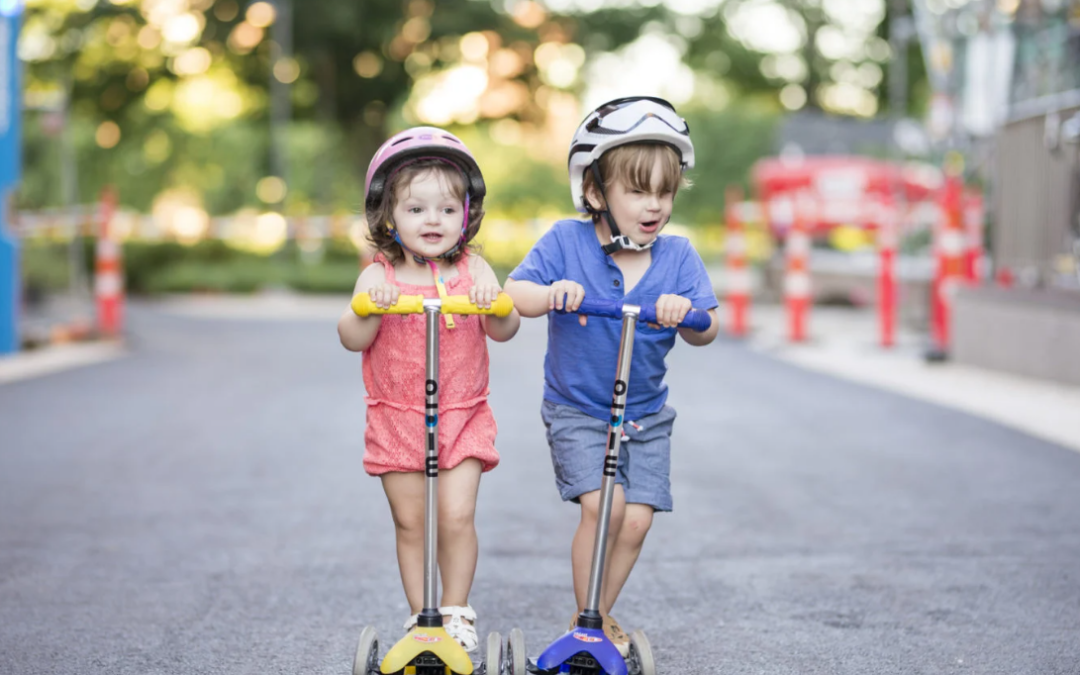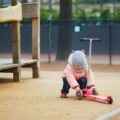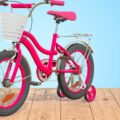We’re all concerned about how much time our little ones are spending in front of screens these days. It’s quite challenging to get their little eyes to look away from phones and tablets in favour of something that would be as entertaining but far better for their developing bodies and minds. So, what can we parents do? Have you tried a ride-on toy? Aside from offering plenty of fun, these toys are great tools in the fight for healthy growth.
When it comes to ride-on toys, a mini scooter and a balance bike are the favorite options among toddlers. Both offer valuable benefits for a child’s development and give a taste of independence, confidence, and an endless amount of fun. But there are some key differences
between a mini scooter for toddlers and a balance bike, which I’ll go over below to help you make the best decision for your child.
Mini Scooter
This is a small and lightweight scooter. It is simple for young children to use and carry because of its lightweight construction. Toddlers may have a lot of fun learning how to maneuver and hone their fine motor skills with mini scooters. Children can learn the fundamentals of balance by needing to stop fast after kicking off the ground to move. Furthermore, using a scooter demands some coordination, which helps kids get ready for various physical activities later on.

And there is also the convenience factor. The mini scooters for toddler models available today are lightweight and offer the ability to be folded down, making them great for families on the go. This means a scooter can be a terrific way to give your child the independence they desire without the trouble of carrying a heavier riding toy wherever you go.
Balance Bikes
Toddlers can also learn how to balance and steer using a balance bike. Kids must use their legs to move themselves ahead because there are no pedals, which helps children develop better motor skills and coordination.
Kids also tend to have an easier time switching from a balance bike to a pedal cycle because they have previously mastered the difficult part—balancing. There won’t be the need for training wheels, and you won’t have to run behind them while striving to keep the bike upright.
When kids learn how to ride a balanced bike, they experience a strong sense of achievement. Learning at their own pace helps them build confidence within every ride, and this sense of accomplishment also benefits other aspects of their growth.
Which One to Choose?
To fully understand the argument about balancing bike vs. scooter, it is important to take into account how each option affects physical development, learning curve, safety, and convenience.
Physical Development
Balance bikes are excellent for developing a variety of motor skills. For steering and balance, respectively, they need a combination of gross and fine motor abilities in addition to basic coordination. This use of many muscle groups promotes general physical development and establishes the foundation for subsequently engaging in more difficult physical activities.
On the other hand, scooters place more emphasis on fine motor skills and balance. Although they target somewhat different muscles, the advantages are similar. Both options promote outdoor play, which is essential for a child’s mental and physical development. Whichever option you choose, getting your child out for some outdoor riding is a terrific way to make sure they’re having fun and developing healthily.
Learning Curve
Is a toddler scooter or balance bike easier for toddlers to learn how to ride? As balancing involves a learning curve, balance bikes may initially seem intimidating. But the truth is that they provide a progressive learning curve. Starting by walking the bike, naturally leads to gliding—a step that leads to the path for riding without the need for training wheels. This process increases confidence and fosters a strong sense of success.
However, scooters are generally easier for children to handle. For young toddlers, pushing off the ground seems natural and might provide a brief rush of excitement. However, this simplicity of use can also mean that learning to ride a scooter happens more quickly, which may reduce the long-term enjoyment that comes from progressively conquering increasingly difficult obstacles, such as those posed by a balancing bike. Ultimately, your child’s interests and your educational objectives for them will determine whether a balanced bike or a scooter is best for them.
Safety
Balance bikes, with their low height and robust design, allow toddlers to keep their feet close to the ground. This helps them learn to stop on their own and, more significantly, builds their self-confidence. And as there are no mechanical interiors, such as chains, there are also fewer pinch places where small fingers might become trapped.

Although scooters come with brakes, using them properly may take more coordination. On a scooter, higher speeds are achieved in the standing position, which increases the chance of falling. Nevertheless, to reduce this risk, a lot of contemporary scooters are built with three wheels and large bases, which are assets for stability. It’s all about striking the correct balance between enjoyment and security. Whichever style of bike or scooter you choose, having supervision, the right equipment, and selecting a model that fits your child’s age and ability level may make all the difference in the world.
Convenience
When weighing the pros and cons of balance bikes versus toddler scooters, families that live in smaller places or travel frequently should give careful thought to portability and storage. Compared to scooters, balance bikes are often a little bigger, which makes them a little harder to store or carry. Nonetheless, many models now have lightweight frames and even folding choices.
Scooters are excellent in this field. They are perfect for keeping in small places or taking on family vacations because of their folding shapes and compact profiles. Scooters are a very practical choice for families on the road since they are easy to carry when not in use, whether it’s for a quick trip to the park or a family vacation. Keep in mind that your kid is more likely to use portable things, so a scooter may give you the best value for your money.
An Occupational therapist, freelance content writer and more importantly a stay-at-home mom, Sara, like all other parents juggles her many roles. Her passion for writing combined with her professional expertise as an Occupational therapist (working with children with special needs) has helped her craft content specific to child health, wellness and learning skills. At present, Sara alternates her time between raising her two young children, and writing about what she knows best- children!





